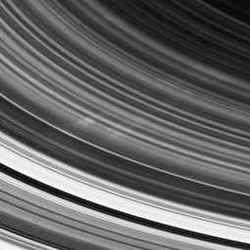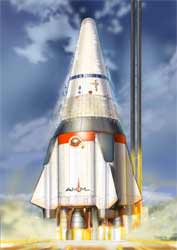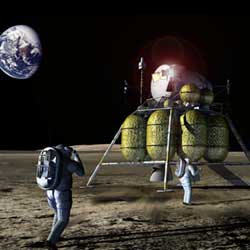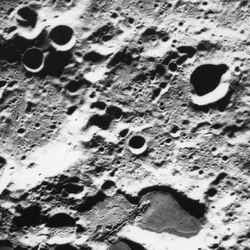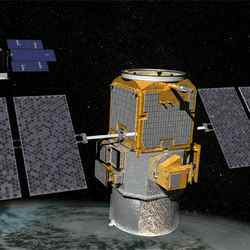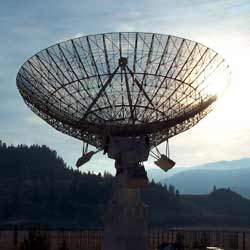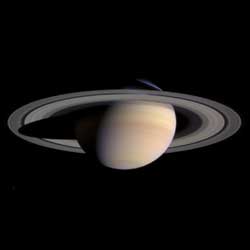
Cassini image of Saturn. Image credit: NASA/JPL. Click to enlarge.
Monday, September 19 – On this day in 1848, William Boyd was watching Saturn – and discovered its moon – Hyperion. If you’re up early this morning, why not take a look at the “Ring King”? It’s making a very spectacular pass through the constellation of Cancer right now and is wonderfully close to the M44! If you’re looking telescopically, be sure to power up for the Cassini Division and even small telescopes can spot its many moons.
Also today in 1988, Israel launched its first satellite. How long has it been since you’ve watched an ISS pass or an iridium flare? Both are terrific events that don’t require any special equipment to be seen. Be sure to check with Heaven’s Above for accurate times and passes in your location and enjoy!
Since we will only have a short time until the Moon rises tonight, let’s follow the progress of a variable star over the next week. Eta Aquilae is one of the most fascinating stars in the sky to watch and it doesn’t even require a telescope. Just look less than one fist-width due south of Altair…
Discovered by Pigot in 1784, this cepheid class variable has a precision change rate of over a magnitude in a period of 7.17644 days. During this time it will reach of maximum of magnitude 3.7 and decline slowly over 5 days to a minimum of 4.5… Yet it only takes two days to brighten again! This period of expansion and contraction makes Eta very unique. To help gauge these changes, compare Eta to Beta on Altair’s same southeast side. When Eta is at maximum, it will be about equal in brightness.
Tuesday, September 20 – On this night in 1948, the 48″ Schmidt telescope at Mt. Palomoar was busy taking pictures. The first photographic plate was being exposed on a galaxy by the same man who ground and polished the corrector plate for this scope – Hendricks. His object of choice was reproduced as panel 18 in the Hubble Atlas of Galaxies and tonight we’ll join his vision as we take a look at the fantastic M31 – Andromeda Galaxy.
Seasoned amateur astronomers can literally point to the sky and show you the location of the M31, but perhaps you have never tried. Believe it or not, this is an easy galaxy to see unaided from even a modest dark sky site. Simply look to the east well after twilight and identify the large diamond-shaped pattern of stars that stretches around a handspan. This is the “Great Square of Pegasus”. The northernmost star is Alpha, and it is here we will begin our hop. Stay with the north chain of stars and look four finger-widths away for an easily seen star. The next along the chain is about three finger-widths away… And we’re almost there. Two more finger-widths to the north and you will see a dimmer star that looks like it has something smudgy nearby. That’s no cloud… That’s the Andromeda Galaxy. Congratulations. You didn’t even need a telescope.
Now get out those optics and enjoy one of the finest, largest and brightest in the sky!
Wednesday, September 21 – With plenty of time to spare before the Moon rises tonight, let’s head on to Capricornus and drop about four finger-widths south of its northeastern most star – Delta – and have a look at M30.
Discovered in 1764 by Charles Messier, binocular observers will spot this small, but attractive, globular cluster easily in the same field with star 41. For telescopic observers, you will find a dense core region and many chains of resolvable stars in this 40,000 light year distant object. Power up.
Tonight, watch as the Moon rises about two hours after sunset. Around a half hour later, you will see Mars join the show as well.
Thursday, September 22 – Today is the Autumnal Equinox, and will occur at 6:23 p.m. EDT. This marks the first day of the Fall season for the Northern Hemisphere and we astronomers welcome back earlier dark skies!
On this universal date for viewers in Hawaii, and most portions of Australia and New Zealand, the Moon will occult one of the Plieades’ stars – Alcyone. What a great event! Be sure to check this IOTA webpages for times in your area.
Now let’s get some more practice in Capricornus, as tonight we’ll take on a more challenging target with confidence. Locate the centermost bright star in the northern half of the constellation – Theta – because we’re headed for the “Saturn Nebula”.
Three finger-widths north of Theta you will see dimmer Nu, and only one finger-width west is NGC 7009. Nicknamed the “Saturn Nebula”, this wonderful blue planetary is around 8th magnitude and achievable in small scopes and large binoculars. Even at moderate magnification, you will see the elliptical shape which gave rise to its moniker. With larger scopes, those “ring like” projections become even clearer, making this challenging object well worth the hunt. You can do it!
Friday, September 23 – Check out the western skyline tonight about a half hour after sunset. The bright planet – Jupiter – is now almost lost, but in 1846 on this day, Johann Galle of the Berlin Observatory found another. This was the first time that Neptune was seen and identified visually.
Thanks to tonight’s much darker skies, you too, will have the same opportunity. Start by identifying Theta once again. Two finger-widths away to the northeast is dim star 29. Now, using your binoculars or finderscope, between them you will see another star and this is our marker. When you have located that star, Neptune is just to its northeast and will be the brightest object in the field with the exception of our marker star. It’s just that easy!
On this day in 1962, the prime time cartoon “The Jetsons” first premiered. Think of all the technology this inspired as tonight we kick back to watch the Alpha Aurigid meteor shower. Relax, face northeast and look for the radiant near Capella. The fall rate is around 12 per hour, and they are fast and leave trails!
Saturday, September 24 – In 1970, the first unmanned, automated return of lunar material to the Earth occurred on this day when the Soviet’s Luna 16 returned with three ounces of the Moon. If we think back, the lowest passing of that Moon to the south occured not long ago. By tomorrow morning it will have reached its highest point just before the Sun rises and will be nearly overhead.
For viewers in Northern Europe, the Moon will occult bright star 136 Taurii on this universal date. Be sure to check this IOTA webpages for a listing of times and locations in your area.
For the rest of us, we’ve got around four hours to play before the Moon brightens the skies. So, are we ready to try for the “Helix”?
Located in a sparsely populated area of the sky, this intriguing target is about a fist width due northwest of bright Formalhaut and about a fingerwidth west of Upsilon Aquarii. While the NGC 7293 is also a planetary nebula, its entirely different than most… It’s a very large and more faded edition of the M57! On a clear, dark night it can be spotted with binoculars since it spans almost one quarter a degree of sky. Using a telescope, stay at lowest power and widest field, because it is so large. It you have an OIII filter, this faded “ring” becomes a braided treat!
Sunday, September 25 – Now, are you ready for something really exciting? There’s a new comet in town and its name is 2005/P3 SWAN. At close to magnitude 10, this is not a comet you are going to see in binoculars or a small telescope, but for those with larger instruments and a northern position, you are going to like this!
Now, mind you… Ursa Major is now a morning constellation for most of us, but 2005/P3 SWAN will be mixing it up with both the Owl Nebula and the M108! The predicted path charts put it about 1 degree southeast of the M97. Happy Hunting!
The skies are getting darker and the times are getting earlier. Let the galaxy hunt begin! Until next week, may all your journeys be at light speed…. ~Tammy Plotner


